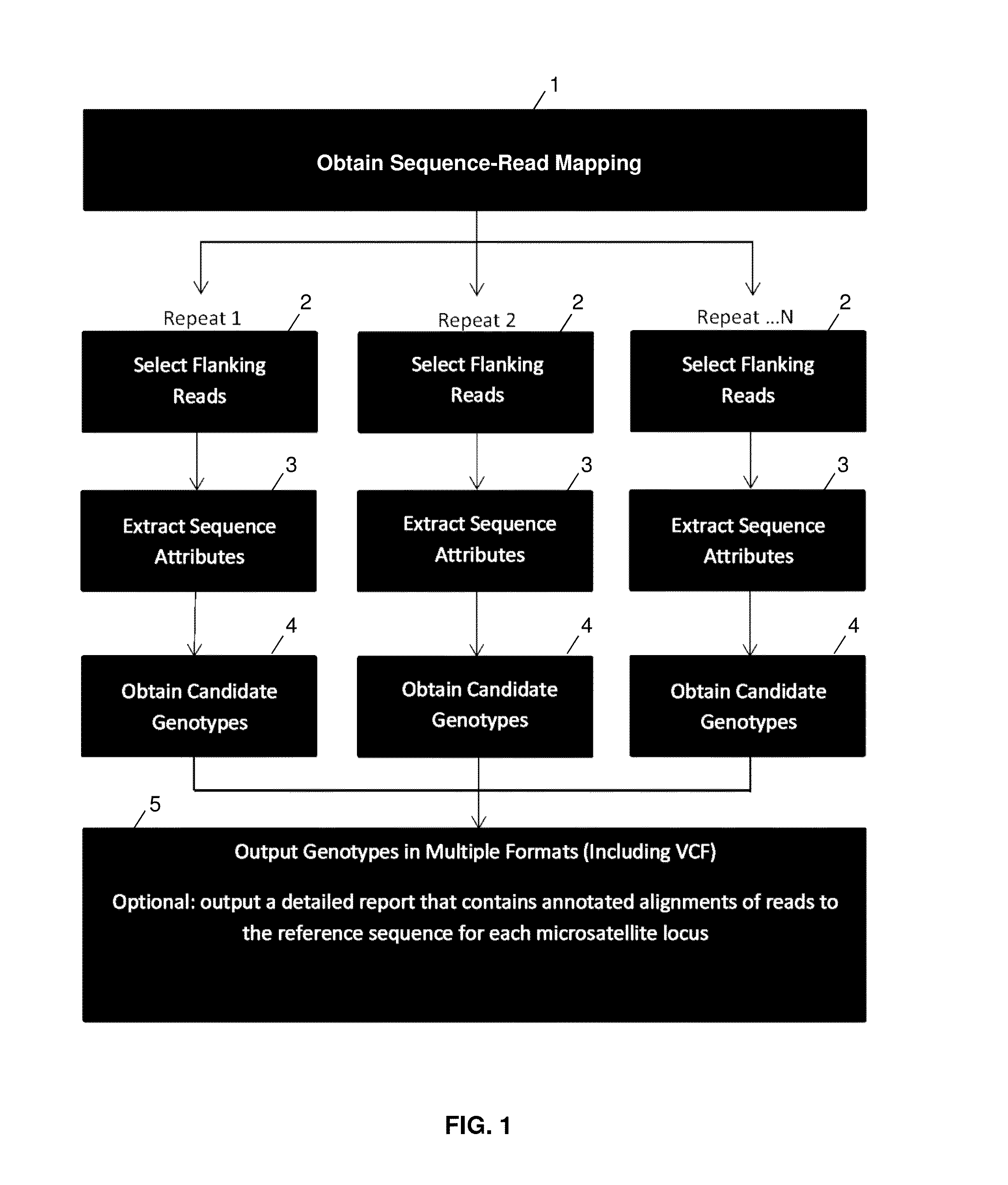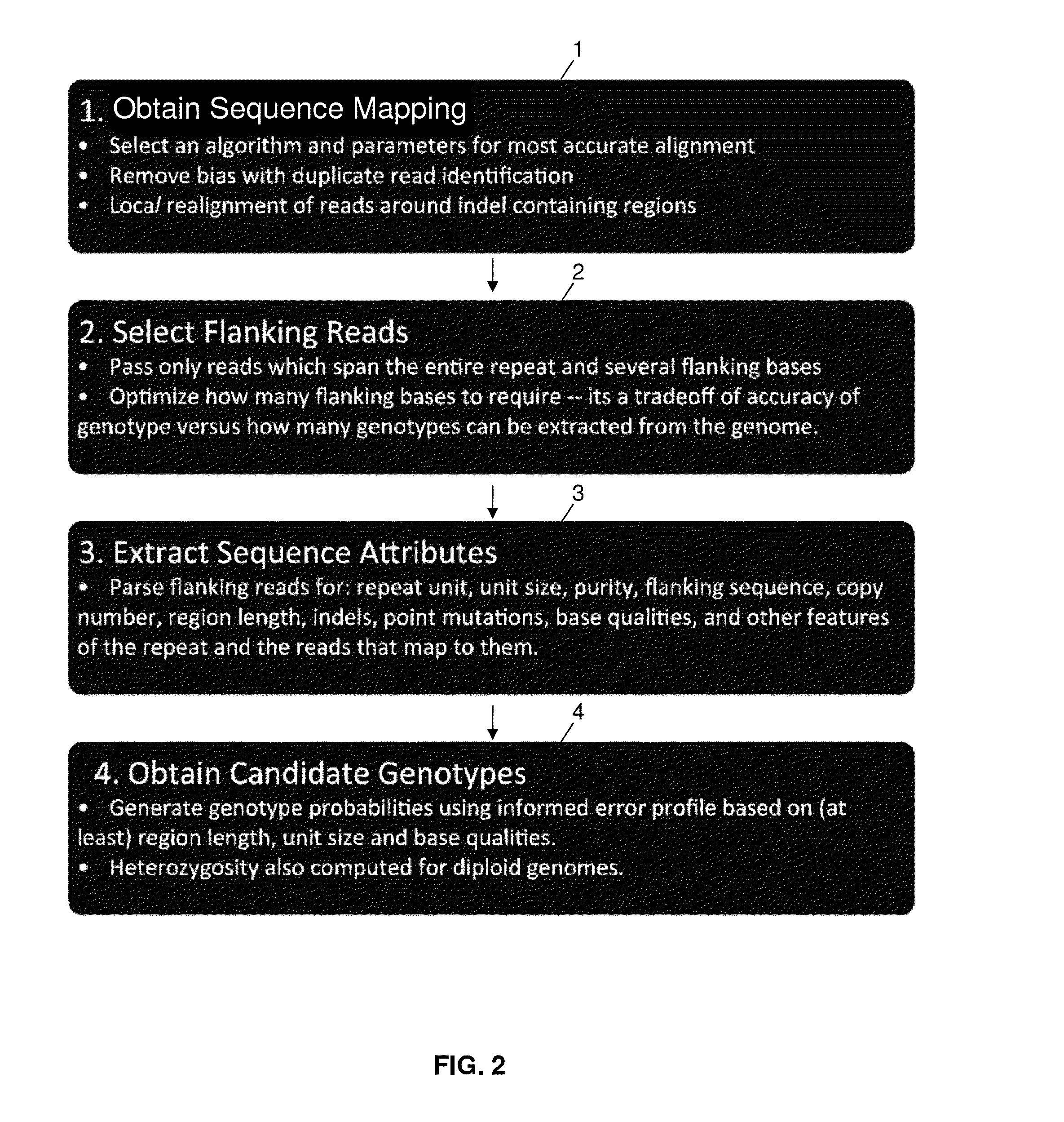System and method for genotyping using informed error profiles
a genotyping and error profile technology, applied in the field of system and method of genotyping tandem repeats, can solve the problems of indel callers that are not suited to identifying repeat mutations, failure to account for the error rate of different repeat types, and difficult study of repetitive sequences (particularly microsatellites), so as to achieve less mismatching bases, less coverage data, and the effect of minimizing the number of mismatching bases
- Summary
- Abstract
- Description
- Claims
- Application Information
AI Technical Summary
Benefits of technology
Problems solved by technology
Method used
Image
Examples
example 1
Analysis of Microsatellite Variation in Drosophila melanogaster with Population-Scale Genome Sequencing
Summary
[0069]Genome sequencing technologies promise to revolutionize the understanding of genetics, evolution, and disease by making it feasible to survey a broad spectrum of sequence variation on a population scale. However, this potential can only be realized to the extent that methods for extracting and interpreting distinct forms of variation can be established. The error profiles and read length limitations of early versions of next-generation sequencing technologies rendered them ineffective for some sequence variant types, particularly microsatellites and other tandem repeats, and fostered the general misconception that such variants are inherently inaccessible to these platforms. At the same time, tandem repeats have emerged as important sources of functional variation. Tandem repeats are often located in and around genes, and frequent mutations in their lengths exert quant...
example 2
Accurate Human Microsatellite Genotypes from High-Throughput Resequencing Data Using Informed Error Profiles
Summary
[0103]Repetitive sequences are biologically and clinically important because they can influence traits and disease, but repeats are challenging to analyze using short-read sequencing technology. The present example presents a system for genotyping microsatellite repeats, which uses Bayesian model selection guided by an empirically derived error model that incorporates sequence and read properties. Next, the present example applies the system to high-coverage genomes from the 1000 Genomes Project (1000 Genomes Project Consortium, Nature 2010) to evaluate performance and accuracy. The system assigned genotypes to ˜90% of the repeat loci, including homopolymers. In addition, comparing the system to lobSTR revealed that ˜90% of repeats genotyped by both methods were assigned the same call. The system in the present example is implemented as software. The software inputs hig...
PUM
 Login to View More
Login to View More Abstract
Description
Claims
Application Information
 Login to View More
Login to View More - R&D
- Intellectual Property
- Life Sciences
- Materials
- Tech Scout
- Unparalleled Data Quality
- Higher Quality Content
- 60% Fewer Hallucinations
Browse by: Latest US Patents, China's latest patents, Technical Efficacy Thesaurus, Application Domain, Technology Topic, Popular Technical Reports.
© 2025 PatSnap. All rights reserved.Legal|Privacy policy|Modern Slavery Act Transparency Statement|Sitemap|About US| Contact US: help@patsnap.com



